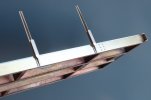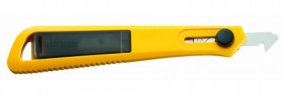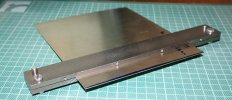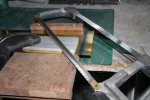Dog Star
Western Thunderer
The scope of interest here is wagon floors for 7mm models of open goods wagons, typicalling those wagons with an overall body length of circa 16'0" to 17'6" and an overall body width of circa 7'6". The intention is to make the wagon floor in two layers, one brass and one plastic... the (visible) plastic layer for body detail and the (non-visible) brass layer for weight and rigidity.
Current idea is to make the plastic layer of around 0.75mm and that can be cut / finished to size with the normal hand tools to be found on most modellers' workbenches (or maybe as a 3DP part). The brass layer to be cut from 0.9mm or 1.00mm sheet... and that is where my confidence takes a shaky turn - how to cut the brass to the desired / finished size easily, accurately, repeatably (say ten or twenty parts). A piercing saw ought to work although maybe not the quickest option. Etching ought to meet the desirable attributes, probably at a price that is going upwards. How about CAD / CAM as a route to the final product using the approaches demonstrated here by Jim (@JimG)?
What might be your way of making the part in the quantities that are required?
thank you, Graham
Current idea is to make the plastic layer of around 0.75mm and that can be cut / finished to size with the normal hand tools to be found on most modellers' workbenches (or maybe as a 3DP part). The brass layer to be cut from 0.9mm or 1.00mm sheet... and that is where my confidence takes a shaky turn - how to cut the brass to the desired / finished size easily, accurately, repeatably (say ten or twenty parts). A piercing saw ought to work although maybe not the quickest option. Etching ought to meet the desirable attributes, probably at a price that is going upwards. How about CAD / CAM as a route to the final product using the approaches demonstrated here by Jim (@JimG)?
What might be your way of making the part in the quantities that are required?
thank you, Graham
Last edited:

 .
. ).
).





